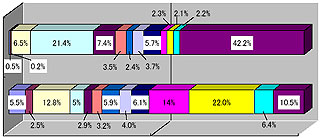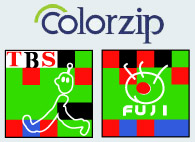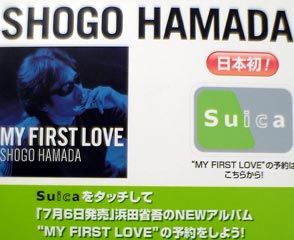Mobile Music Best Practices from Japan and Korea
While Japan’s music market is second only to the US, with $3.5 bn in CD sales, it ranks first in mobile music in terms of market size, service penetration and sophistication. Japanese record labels have managed a powerful comeback from their failure in the wild, MIDI ring tone-based 2G music market to massive success in the master-rights-based "Chaku-uta" 3G universe. They already own a 20-percent share of Japan’s $1-billion-plus mobile music market. How did they pull off this stunning achievement? The labels identified their core assets in the mobile universe: trust and convenience.
Editor’s Note: Today’s guest Viewpoint is based on "Mobile Music Best Practices from Japan and Korea," a 103-page report recently released by Vectis International. WWJ subscribers login to read the article and receive a special 10% discount coupon!!
Researched and written over a period of several months by Simon Bureau, Managing Director and Editor, and Benjamin Joffe, Japan Market Analyst — two of the saviest mobile industry watchers in Asia — Vectis’ "Mobile Music Best Practices" provides 103 pages of sharp and critical analysis covering mobile music downloading as it has developed in the world’s top two wireless markets. With reference to carriers, content providers, networks, terminals, pricing, marketing and end-user behavior, "Mobile Music" is a must-read for anyone involved in planning and commercializing on-the-go music services anywhere.



 Mobile commerce over cell phones jumped 25 percent last fiscal year to around 971 billion yen ($8.8 billion) according to a survey on e-business just released by Japan’s Ministry of Economy, Trade and Industry [
Mobile commerce over cell phones jumped 25 percent last fiscal year to around 971 billion yen ($8.8 billion) according to a survey on e-business just released by Japan’s Ministry of Economy, Trade and Industry [ Now that TV viewing has jumped off the couch and onto the streets over wireless handsets, Japanese TV broadcasters are scrambling to adapt content and programming to mobile viewing. Colorzip Japan is introducing a Technicolor technology that could bring TV mobile marketing into focus for broadcasters.
Now that TV viewing has jumped off the couch and onto the streets over wireless handsets, Japanese TV broadcasters are scrambling to adapt content and programming to mobile viewing. Colorzip Japan is introducing a Technicolor technology that could bring TV mobile marketing into focus for broadcasters. Japanese IC cards have pop posters grooving to a techno beat this summer. Fans of hunky J-Pop star
Japanese IC cards have pop posters grooving to a techno beat this summer. Fans of hunky J-Pop star  DoCoMo’s hybrid 3G-PDA M1000 handset is off the showroom floor and finally on the street. WWJ was at the launch event and we’ve put together a quick video program showing just what sort of hoops this smartphone jumps through. Previewed at an April 15 press conference, the tri-band business-use handset from Motorola juggles W-CDMA, GSM and GPRS for global roaming, opens Microsoft Word, Excel and PowerPoint programs as well as PDF files, and allows multiple email functions including POP and IMAP email. Internet access channels through the Opera 7.5 browser. DoCoMo took the (daring) step of dropping i-mode capability for the M1000 in favor of global compatibility. More PDA than phone, all navigation is through the bright, 2.9-inch touch screen.
DoCoMo’s hybrid 3G-PDA M1000 handset is off the showroom floor and finally on the street. WWJ was at the launch event and we’ve put together a quick video program showing just what sort of hoops this smartphone jumps through. Previewed at an April 15 press conference, the tri-band business-use handset from Motorola juggles W-CDMA, GSM and GPRS for global roaming, opens Microsoft Word, Excel and PowerPoint programs as well as PDF files, and allows multiple email functions including POP and IMAP email. Internet access channels through the Opera 7.5 browser. DoCoMo took the (daring) step of dropping i-mode capability for the M1000 in favor of global compatibility. More PDA than phone, all navigation is through the bright, 2.9-inch touch screen.